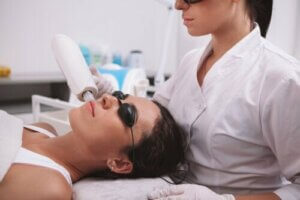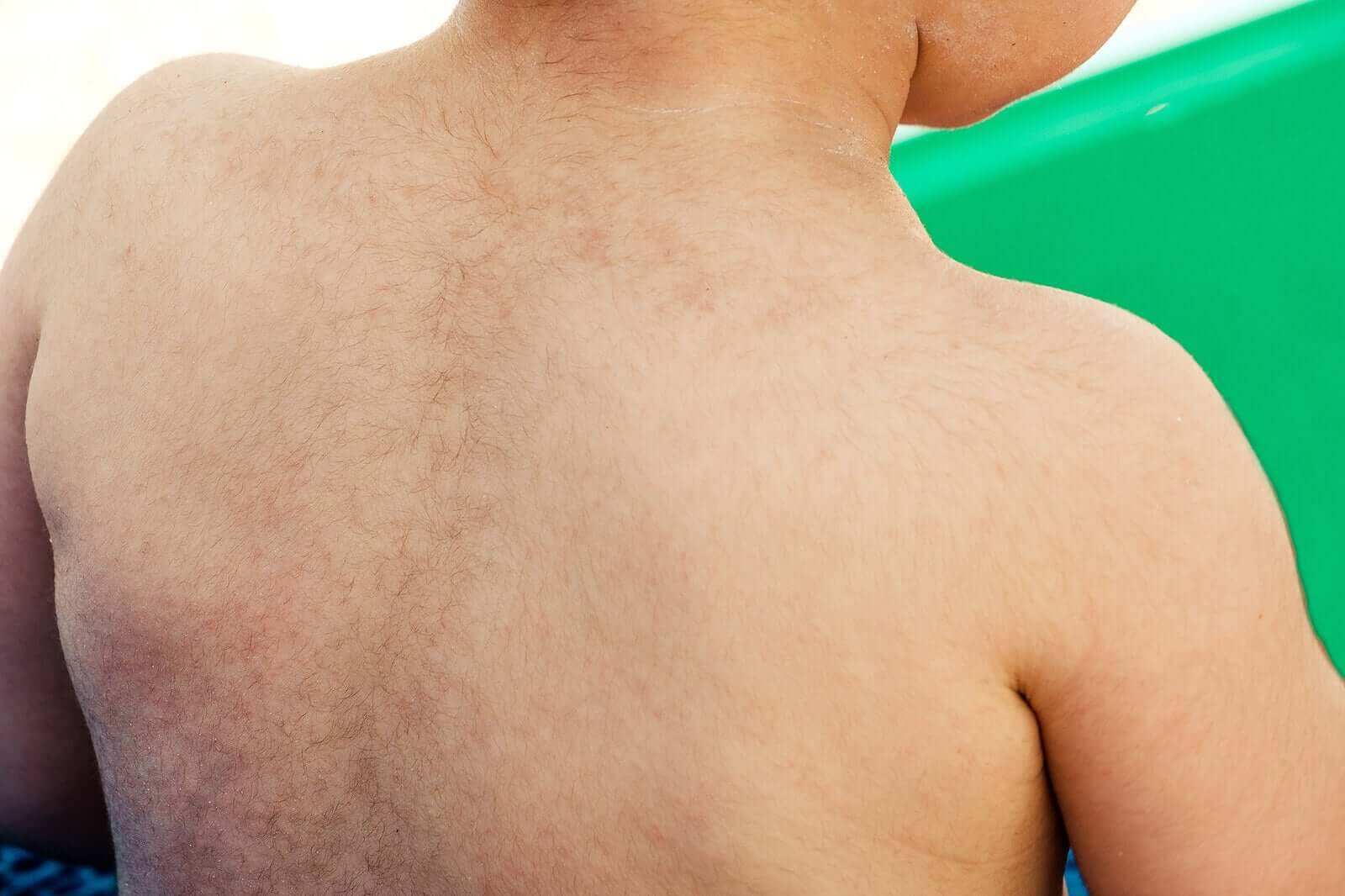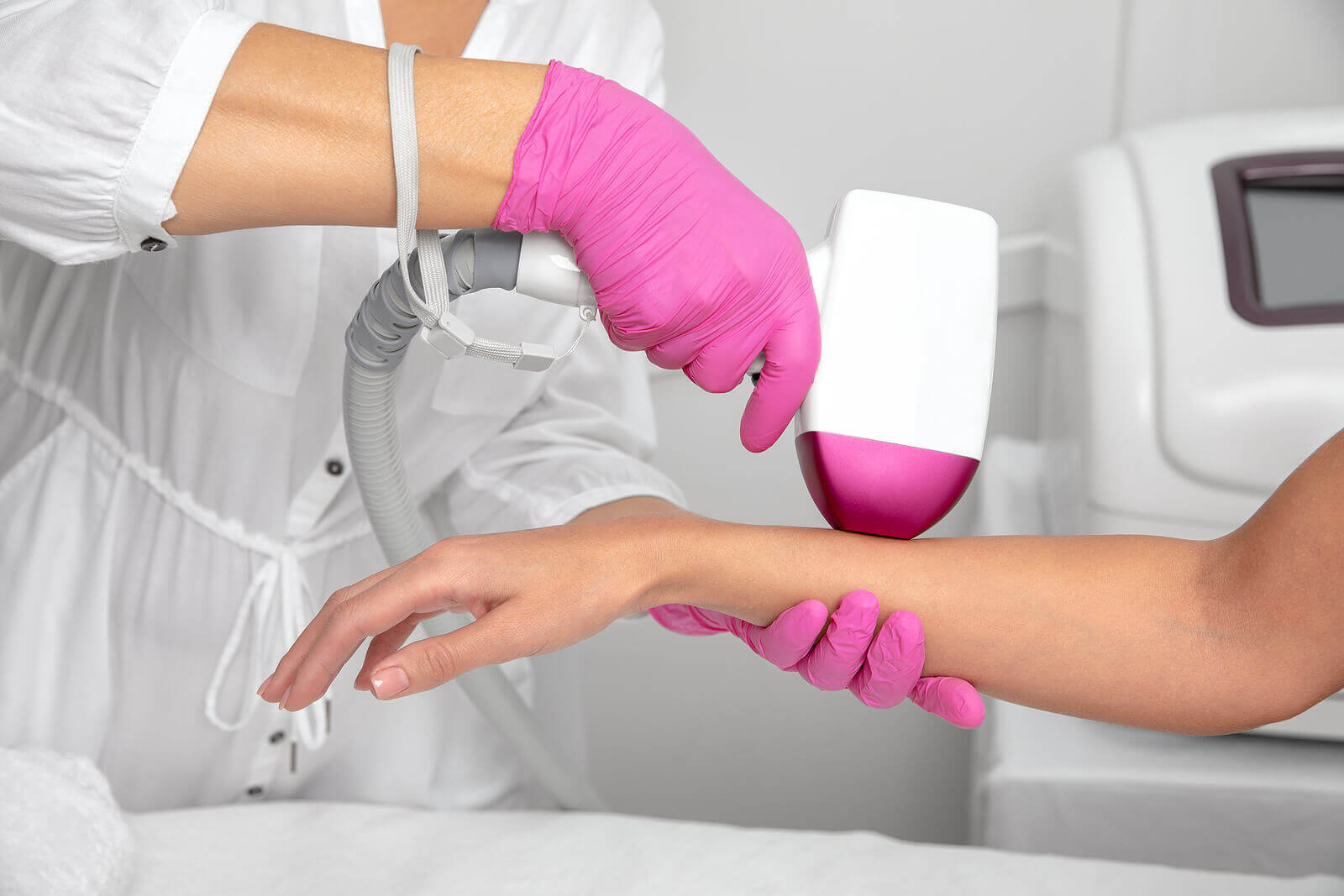Hirsutism or Excessive Hair Growth in Children


Written and verified by the dermatologist Maria del Carmen Hernandez
When it comes to visiting the dermatologist, one of the most common consultations is hirsutism or excessive hair growth in children. The main reason for their consultation is aesthetic.
This condition affects between 5 to 10% of women. Furthermore, in the case of children, it usually relates to precocious puberty. In this article, you’ll find more information about it.
What is hirsutism or excessive hair growth?
Hirsutism is a male pattern of secondary or post-pubertal excessive hair growth occurring in women.
It differentiates from hypertrichosis because the hair that grows excessively is located in parts of the body that respond to androgens stimuli.
Common affected areas
It usually affects androgen-dependent areas (male hormones) from the body or the face. The following are the most common affected areas:

- Thighs.
- Gluteus.
- Pubic hair.
- Mustache and beard.
- White line (linea alba).
- Supralabial region.
Causes of hirsutism or excessive hair growth in children
Many reasons can cause hirsutism in children, such as hyperandrogenism (ovarian or adrenal), tumors or metabolic syndromes.
Other medical conditions related to hirsutism
- Polycystic ovary syndrome (PCOS): this is the most common cause of hirsutism, since it represents 75% of excessive hair growth cases. It appears during puberty. According to the magazine Metabolic Syndrome and Related Disorders, common symptoms are menstrual cycle alterations, weight gain, dyslipidemia, insulin resistance, acne and acanthosis nigricans.
- Androgen secreting tumors: this is a rare cause. However, in certain cases, abnormal tumors are found. These tumors regulate without the help of hypothalamic hypophysis axis.
- Non-classical congenital adrenal hyperplasia: this is the most common cause of adrenal hyperandrogenism. Besides, this is an autosomal recessive disorder, which causes a partial 21-hydroxylase deficiency. It usually entails high levels of blood pressure, blood sugar, bone and muscle weakness and headaches.
- Medication: there are many types of medication that cause hirsutism: androgens, glucocorticoids, vasodilators (minoxidil), cyclosporine, danazol, progestagens and estrogens. In addition, many of these medications cause hypertrichosis.
- Endocrinopathies: hirsutism isn’t always present in this condition. Some of the most common endocrinopathies are Cushing’s syndrome, acromegaly, hyperprolactinemia and thyroid dysfunctions.
- Idiopathic hirsutism: people who suffer from this kind of hirsutism have normal ranges of androgens, regular menstrual cycles and normal ovarian morphology. Therefore, it’s a diagnosis of exclusion, after eliminating the rest of the etiologic possibilities.
What is the diagnostic process?
Firstly, when visiting the specialist, it’s important to identify if the hair grows in a male-like pattern or all over the body (hypertrichosis).
The seriousness of this condition is based on the Ferriman-Gallwey hirsutism scoring system. According to this system, it’s necessary to analyze 9 different parts of the body.
Another useful diagnosis method is a lab test. This provides detailed information regarding serum markers, which allows us to know the exact etiology.
Other common symptoms related to the increase of androgens are menstrual irregularities, acne, frontal alopecia and temporal recession in hair growth.
Treatment for hirsutism or excessive hair growth in children
The treatment for hirsutism will depend on the etiology, the patient’s age, symptoms and concomitant signs. If certain medication caused hirsutism, after stopping the intake, symptoms should disappear.
If hyperandrogenism is diagnosed after several lab tests, oral treatment is the best choice. Furthermore, according to studies from the Indian Journal of Dermatology, oral contraceptives are the leading medical treatment for hirsutism.

Face and body hair removal
Once the proper diagnosis and treatment are identified, it’s time to consider hair removal. For that purpose, there are different temporary hair removal methods, such as wax, depilatory creams and shaving. However, these kinds of methods tend to cause irritation and dermatitis.
Due to their duration, laser hair removal and electrolysis are the best methods. To obtain results, most people need from 6 to 8 sessions.
More than just an excessive hair issue
Finally, excessive hair in women may cause shyness, low self-esteem and difficulty to interact with other people. This is why, in case of having any of these symptoms, it’s important to visit a specialist, to treat them properly.
When it comes to visiting the dermatologist, one of the most common consultations is hirsutism or excessive hair growth in children. The main reason for their consultation is aesthetic.
This condition affects between 5 to 10% of women. Furthermore, in the case of children, it usually relates to precocious puberty. In this article, you’ll find more information about it.
What is hirsutism or excessive hair growth?
Hirsutism is a male pattern of secondary or post-pubertal excessive hair growth occurring in women.
It differentiates from hypertrichosis because the hair that grows excessively is located in parts of the body that respond to androgens stimuli.
Common affected areas
It usually affects androgen-dependent areas (male hormones) from the body or the face. The following are the most common affected areas:

- Thighs.
- Gluteus.
- Pubic hair.
- Mustache and beard.
- White line (linea alba).
- Supralabial region.
Causes of hirsutism or excessive hair growth in children
Many reasons can cause hirsutism in children, such as hyperandrogenism (ovarian or adrenal), tumors or metabolic syndromes.
Other medical conditions related to hirsutism
- Polycystic ovary syndrome (PCOS): this is the most common cause of hirsutism, since it represents 75% of excessive hair growth cases. It appears during puberty. According to the magazine Metabolic Syndrome and Related Disorders, common symptoms are menstrual cycle alterations, weight gain, dyslipidemia, insulin resistance, acne and acanthosis nigricans.
- Androgen secreting tumors: this is a rare cause. However, in certain cases, abnormal tumors are found. These tumors regulate without the help of hypothalamic hypophysis axis.
- Non-classical congenital adrenal hyperplasia: this is the most common cause of adrenal hyperandrogenism. Besides, this is an autosomal recessive disorder, which causes a partial 21-hydroxylase deficiency. It usually entails high levels of blood pressure, blood sugar, bone and muscle weakness and headaches.
- Medication: there are many types of medication that cause hirsutism: androgens, glucocorticoids, vasodilators (minoxidil), cyclosporine, danazol, progestagens and estrogens. In addition, many of these medications cause hypertrichosis.
- Endocrinopathies: hirsutism isn’t always present in this condition. Some of the most common endocrinopathies are Cushing’s syndrome, acromegaly, hyperprolactinemia and thyroid dysfunctions.
- Idiopathic hirsutism: people who suffer from this kind of hirsutism have normal ranges of androgens, regular menstrual cycles and normal ovarian morphology. Therefore, it’s a diagnosis of exclusion, after eliminating the rest of the etiologic possibilities.
What is the diagnostic process?
Firstly, when visiting the specialist, it’s important to identify if the hair grows in a male-like pattern or all over the body (hypertrichosis).
The seriousness of this condition is based on the Ferriman-Gallwey hirsutism scoring system. According to this system, it’s necessary to analyze 9 different parts of the body.
Another useful diagnosis method is a lab test. This provides detailed information regarding serum markers, which allows us to know the exact etiology.
Other common symptoms related to the increase of androgens are menstrual irregularities, acne, frontal alopecia and temporal recession in hair growth.
Treatment for hirsutism or excessive hair growth in children
The treatment for hirsutism will depend on the etiology, the patient’s age, symptoms and concomitant signs. If certain medication caused hirsutism, after stopping the intake, symptoms should disappear.
If hyperandrogenism is diagnosed after several lab tests, oral treatment is the best choice. Furthermore, according to studies from the Indian Journal of Dermatology, oral contraceptives are the leading medical treatment for hirsutism.

Face and body hair removal
Once the proper diagnosis and treatment are identified, it’s time to consider hair removal. For that purpose, there are different temporary hair removal methods, such as wax, depilatory creams and shaving. However, these kinds of methods tend to cause irritation and dermatitis.
Due to their duration, laser hair removal and electrolysis are the best methods. To obtain results, most people need from 6 to 8 sessions.
More than just an excessive hair issue
Finally, excessive hair in women may cause shyness, low self-esteem and difficulty to interact with other people. This is why, in case of having any of these symptoms, it’s important to visit a specialist, to treat them properly.
All cited sources were thoroughly reviewed by our team to ensure their quality, reliability, currency, and validity. The bibliography of this article was considered reliable and of academic or scientific accuracy.
- Gainder S, Sharma B. Update on Management of Polycystic Ovarian Syndrome for Dermatologists. Indian Dermatol Online J. 2019 Mar-Apr;10(2):97-105. doi: 10.4103/idoj.IDOJ_249_17. PMID: 30984582; PMCID: PMC6434760.
- Lumezi BG, Berisha VL, Pupovci HL, Goçi A, Hajrushi AB. Grading of hirsutism based on the Ferriman-Gallwey scoring system in Kosovar women. Postepy Dermatol Alergol. 2018 Dec;35(6):631-635. doi: 10.5114/ada.2018.77615. Epub 2018 Nov 13. PMID: 30618534; PMCID: PMC6320479.
- Alonso, G. Hirsutismo. Capítulo 82. En: Gioseffi, M.L. Dermatología en Pediatría ambulatoria. Buenos Aires. Editorial Médica Panamericana. 2017. ISBN 978-950-06-9530-5. pp 302-306.
- Roldán Martin, M.B., Martín Frías, M., Alonso Blanco, M. Hiperandrogenismo. Pediatr Integral 2015; XIX (7) 498-508. Disponible en: https://www.pediatriaintegral.es/publicacion-2015-09/hiperandrogenismo/.
- Bremer A. A. Polycystic ovary syndrome in the pediatric population. Metabolic syndrome and related disorders, 2010, 8(5), 375–394. https://doi.org/10.1089/met.2010.0039.
- Sachdeva S. Hirsutism: evaluation and treatment. Indian journal of dermatology, 2010, 55(1), 3–7. https://doi.org/10.4103/0019-5154.60342.
- Gilchrist VJ, Hecht BR. A practical approach to hirsutism. Am Fam Physician. 1995 Nov 1;52(6):1837-46. PMID: 7484694.
- FERRIMAN D, GALLWEY JD. Clinical assessment of body hair growth in women. J Clin Endocrinol Metab. 1961 Nov;21:1440-7. doi: 10.1210/jcem-21-11-1440. PMID: 13892577.
- Clínica Mayo. Obesidad infantil. Disponible en: https://www.mayoclinic.org/es-es/diseases-conditions/childhood-obesity/symptoms-causes/syc-20354827.
- CareFirst. Síndrome de Cushing en los niños. Disponible en: https://carefirst.staywellsolutionsonline.com/spanish/Encyclopedia/160,112es.
- MedlinePlus. Pubertad. Disponible en: https://medlineplus.gov/spanish/puberty.html.
This text is provided for informational purposes only and does not replace consultation with a professional. If in doubt, consult your specialist.








